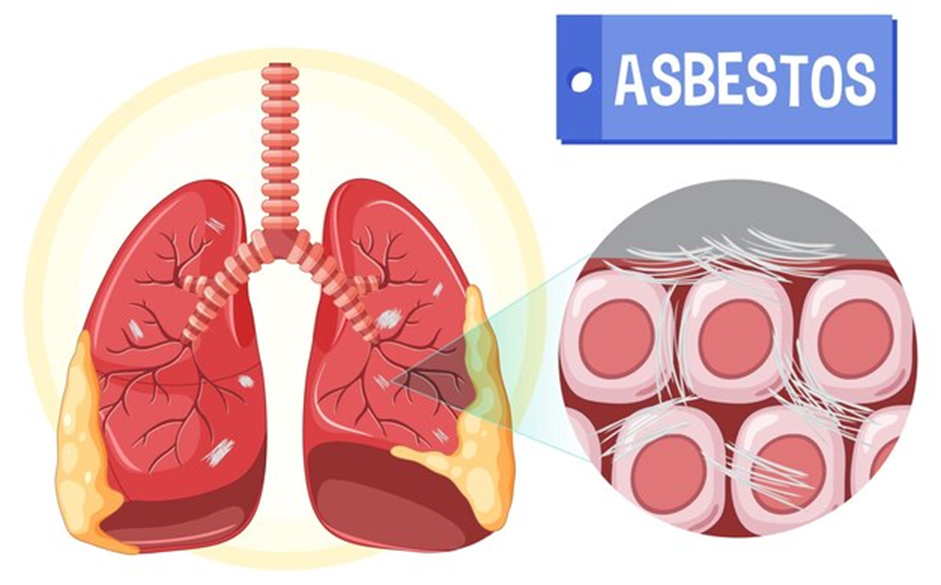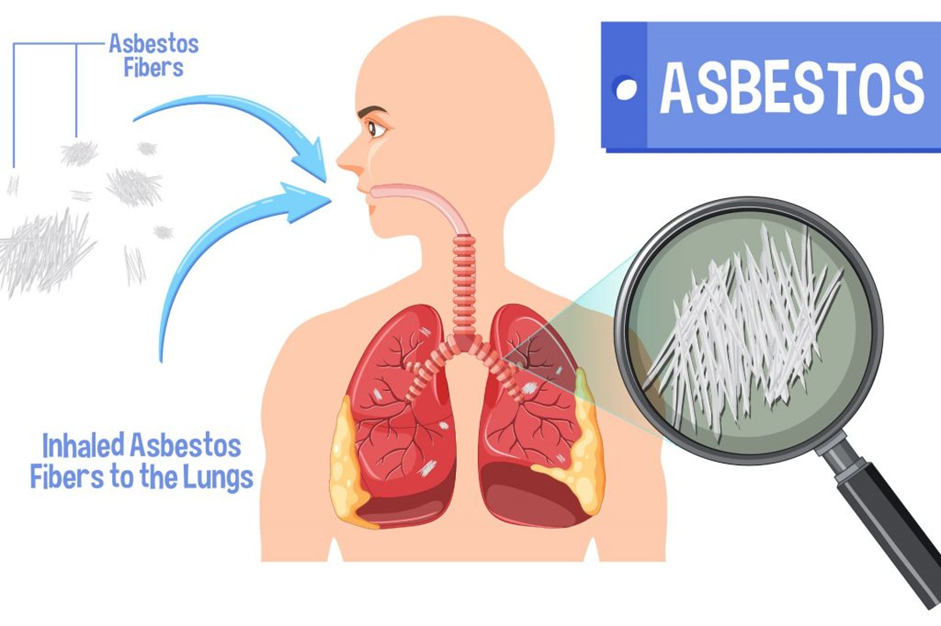Asbestos, a once widely celebrated mineral for its heat resistance and durability, is now a silent threat to human health. Despite its ban in many countries, its legacy persists in countless buildings, posing a grave risk to those who encounter it.
In this article, we delve into all aspects of asbestos, focusing on its link to lung cancer.
You should hire an experienced asbestos lawyer if you are a victim of asbestos exposure.
Going further:
What is Asbestos?
Asbestos is a naturally occurring mineral known for its remarkable resistance to heat, fire, and corrosion. Due to these properties, various industries used it, including construction, shipbuilding, and automotive manufacturing, throughout the 20th century. Its fibrous nature made it ideal for strengthening materials and providing insulation.
The Danger Lurking Within
However, despite its usefulness, asbestos holds a dark secret: its microscopic fibers can quickly become airborne when disturbed. Once inhaled or ingested, these fibers can embed in the lungs or other organs, leading to serious health complications.
The Link to Lung Cancer
One of the most alarming consequences of asbestos exposure is its connection to lung cancer. When you inhale asbestos fibers, they can cause inflammation and scarring in the lungs, leading to conditions such as asbestosis and mesothelioma. Over time, this damage increases the risk of developing lung cancer.
Who is at Risk?
The dangers of asbestos exposure affect everyone, regardless of their occupation. While workers in industries where asbestos is heavily used face higher risks, asbestos-containing materials can endanger homeowners, DIY enthusiasts, and individuals residing near asbestos mines or manufacturing facilities.
Protecting Yourself and Others
The first step in protecting yourself and your loved ones from asbestos-related health risks is awareness. If you suspect your home or workplace contains asbestos, you must seek professional assistance for inspection and removal. Additionally, when renovating or demolishing older buildings, take precautions to minimize the release of asbestos fibers into the air.
How to Get Rid of Asbestos
Removing asbestos is a task that requires caution and expertise to ensure the safety of everyone involved. Here’s a step-by-step guide on how to properly get rid of asbestos:
- Assessment: Before any removal occurs, it’s essential to determine whether is asbestos still around and the extent of its contamination. This often requires hiring a certified asbestos inspector to assess the property thoroughly.
- Consultation: Once asbestos is confirmed, consult with professionals specializing in asbestos removal. These professionals can handle asbestos safely and have the necessary protective gear and tools.
- Regulations and Permits: Familiarize yourself with local laws regarding asbestos removal. Specific permits may be required in many areas before any work can begin.
- Containment: Asbestos removal typically involves isolating the contaminated area to prevent the spread of asbestos fibers. This may include sealing off rooms or areas with plastic sheeting and using negative air pressure systems to contain airborne fibers.
- Protective Gear: Anyone involved in the removal process must wear appropriate protective gear, including disposable coveralls, gloves, respirators, and safety goggles. This gear helps minimize the risk of exposure to asbestos fibers.

- Wet Methods: Experts use wet methods during removal to reduce the release of asbestos fibers into the air. It involves spraying the asbestos-containing material with water to dampen it before removal.
- Careful Removal: You should remove asbestos from asbestos-containing materials carefully, in large pieces, and whenever possible to minimize fiber release. Avoid using power tools that may generate dust, as this can increase the risk of exposure.
- Disposal: Dispose of asbestos-containing materials by sealing them in leak-tight containers and transporting them to approved disposal sites.
- Cleanup: After removal, thoroughly clean the work area using wet methods and HEPA vacuums to ensure no remaining asbestos. Dispose of cleaning materials and protective gear as asbestos waste.
- Final Inspection: After cleanup, conduct a final inspection to ensure that all asbestos-containing materials have been adequately removed. This may require another assessment by a certified asbestos inspector.
- Post-Removal Monitoring: Post-removal monitoring may be necessary to ensure the area remains asbestos contamination-free. This may involve air sampling and testing to verify that asbestos levels are within acceptable limits.
Seeking Legal Recourse
For those who have been diagnosed with asbestos-related illnesses, seeking legal recourse may be necessary to cover medical expenses and obtain compensation for pain and suffering. Many countries have laws to hold companies accountable for asbestos exposure and its consequences.
The Wrap-Up!
In conclusion, asbestos poses a significant threat to public health, with lung cancer being just one of the devastating consequences of exposure. By understanding the dangers of asbestos and taking proactive measures to mitigate exposure, we can work towards creating safer environments for ourselves and future generations.

Let’s not allow this silent intruder to continue its reign of harm unchecked.
An Occupational therapist, freelance content writer and more importantly a stay-at-home mom, Sara, like all other parents juggles her many roles. Her passion for writing combined with her professional expertise as an Occupational therapist (working with children with special needs) has helped her craft content specific to child health, wellness and learning skills. At present, Sara alternates her time between raising her two young children, and writing about what she knows best- children!





